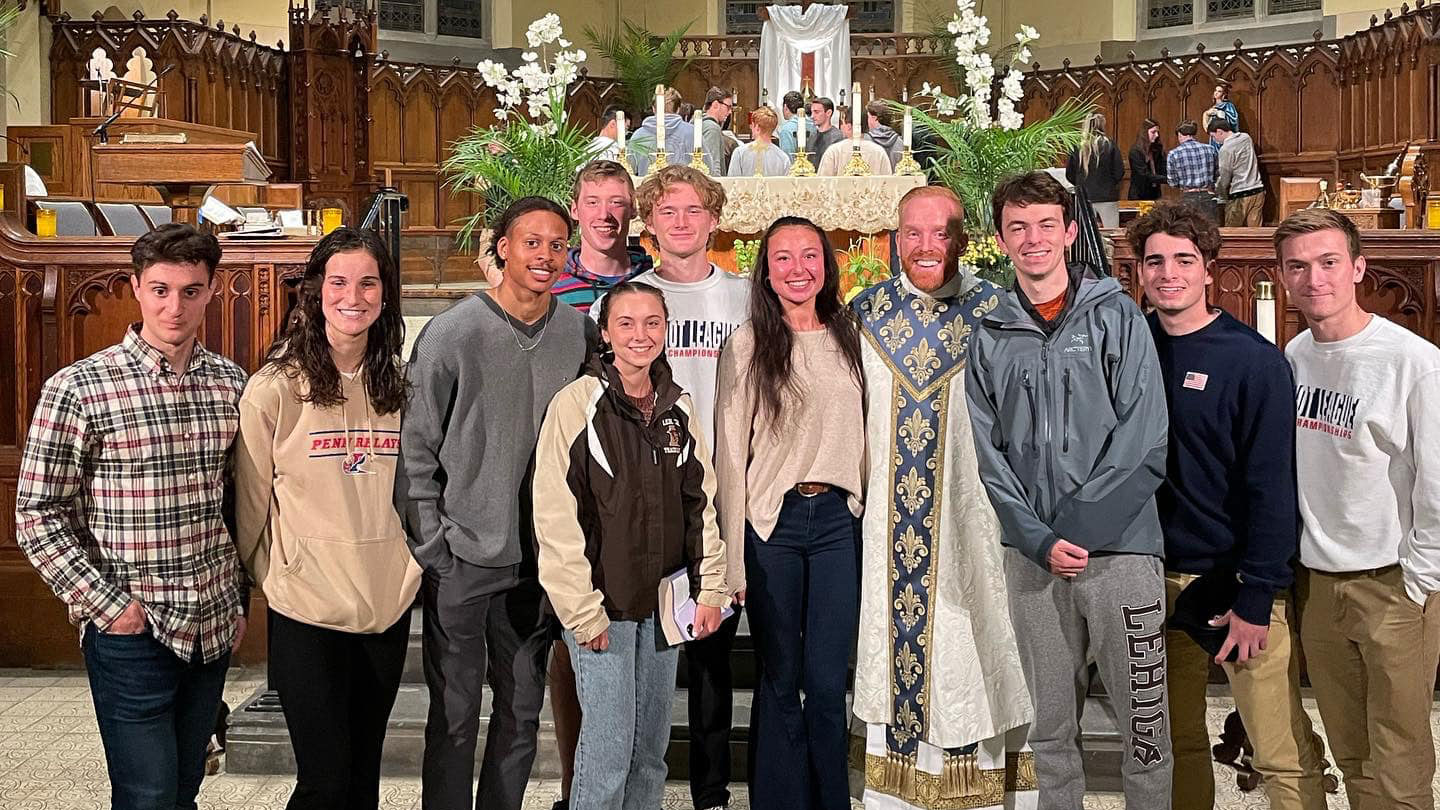Whether you’re one of the 31.5 million people in the U.S. who claim Irish ancestry or not, you’re most likely aware of (and perhaps even will celebrate!) St. Patrick’s Day on March 17. The day will be especially meaningful this year for a group of Lehigh students, led by Fr. Mark Searles, Lehigh’s Catholic chaplain and director of the Newman Center.
“We’re visiting a parish church in Carna, County Galway, Ireland, doing mission work and evangelization,” Searles says. “We’re making pilgrimages to a mountain where St. Patrick stayed and to the famous shrine to Our Lady of Knock. Each evening we are meeting the local people to socialize, pray with them, and share some great conversation and fellowship.”
The Real St. Patrick
As popular as St. Patrick’s day is in the United States, few people know the backstory of this patron saint of the Emerald Isle, a figure cloaked in the mists of time.
Born Maewyn Succat in the late 4th century in either the lowlands of Scotland or Roman-controlled Wales, St. Patrick was the son of a Roman-British army officer who was a deacon of the Catholic Church. Despite his father's devout involvement in the church, Maewynn was not a believer and lived an unremarkable life up until age 16.

The Kidnapping
All that changed when he was kidnapped by Irish raiders and sold into slavery in Ireland. According to St. Patrick’s autobiography, Confessio, he was held in a prison for six years, working as a herdsman of sheep and pigs on Mount Slemish in County Antrim in the north of Ireland. It was during this time of hardship that the young Maewyn found solace in his Christian roots, believing that his kidnapping and enslavement were punishment for his lack of faith.
Legend has it that a dream or vision guided him to escape, leading him to a ship that would carry him back to Britain. Reunited with his family, Maewyn experienced a profound spiritual transformation. In a dream, he heard the voices of the Irish people beseeching him to return and share the Christian teachings.
Back to Ireland
Maewyn left home to study at a monastery in France, possibly under St. Germain, bishop of Auxerre. Twelve years later, having been ordained a bishop and with the pope’s blessing, he returned to Ireland to minister to its people.
The shamrock, often associated with St. Patrick, became a symbol he used to explain the concept of the Holy Trinity. St. Patrick's efforts bore fruit, and over the years, he baptized thousands, established churches, and laid the foundations for a Christian Ireland.
Lehigh in Ireland
“St. Patrick has always been one of my favorite saints for his courage to return to Ireland to help the people who took him away from his homeland as a child and made him a slave,” says Searles. “He saw the poverty of faith in Ireland and desired to lead the people to Jesus Christ as a good shepherd. So he literally went from tending sheep in Ireland as a slave to returning as a bishop to tend the flock of the church to lead the people to heaven!”
Last year, Searles visited the cathedral in Armagh, Ireland, where St. Patrick was bishop. He’s excited to return to the Emerald Isle with Lehigh students this year on the saint’s feast day and to have the group do community service as well.
“It’s a fitting way to honor a person whose life stands as a testament to the ability of one person to transcend personal suffering and, in turn, bring light to the lives of others,” Searles said.
